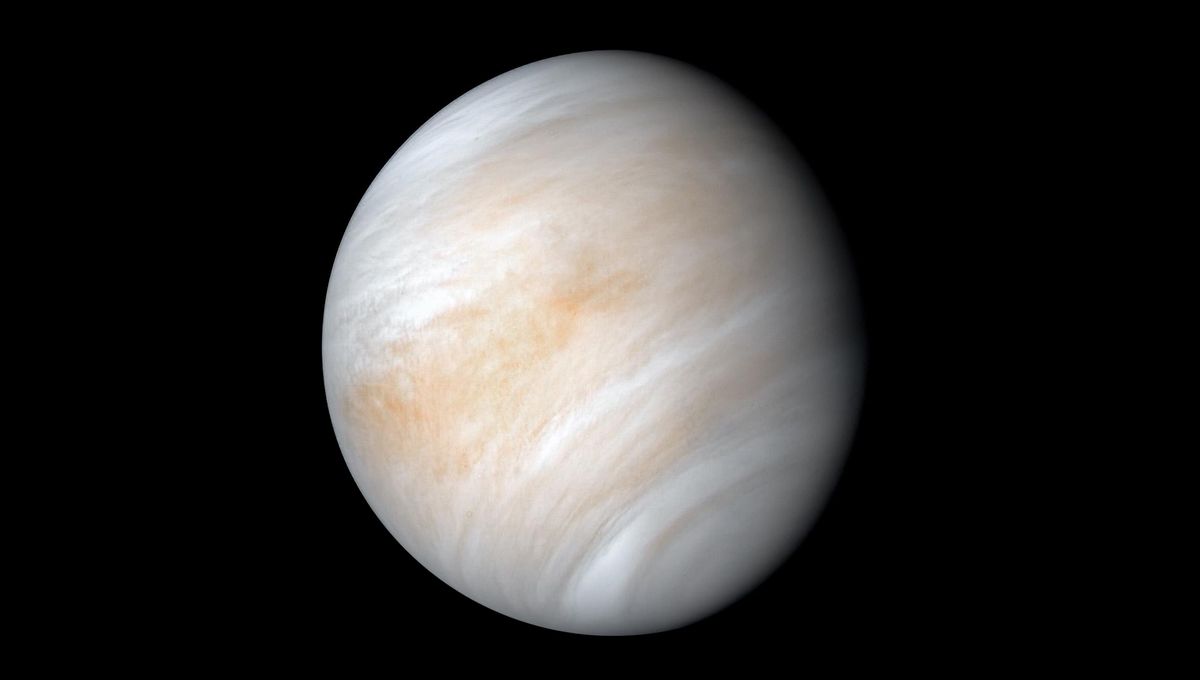
The last several years have shown that there is a lot more to understand about Venus, both present and past. As worlds go, Venus is hellish. A surface temperature high enough to melt lead and a surface pressure like being a kilometer underwater don’t make it homely, plus the clouds that cover the whole planet are rich in a variety of acids – and yet the picture is more complicated. Venus might once have had the same amount of water as Earth.
Evidence of active volcanos is mounting, and intriguing molecules such as phosphine and potentially ammonia have been spotted. Now, researchers at Tohoku University have probed the water distribution of the Venusian atmosphere, revealing more peculiarities.
“Venus is often called Earth’s twin due to its similar size,” study co-author Hiroki Karyu, a researcher at Tohoku University, said in a statement. “Despite the similarities between the two planets, it has evolved differently. Unlike Earth, Venus has extreme surface conditions.”
The planet and its clouds are dry now, but there is still water floating about. The researchers used data from the Solar Occultation in the Infrared (SOIR) instrument, part of ESA’s Venus Express, to measure the abundance of two different types of water molecules: regular and semiheavy.
Regular water is just your standard H2O. We love it as it is crucial to the survival of all life on Earth. You might have heard of semiheavy water in the context of nuclear power plants. This is water where one of the two hydrogen atoms has been swapped for an atom of deuterium, a hydrogen isotope. Regular hydrogen is made of an electron orbiting a proton, while deuterium has an electron orbiting a proton and a neutron.
The ratio between the two types of water is expected to be the same between Venus and Earth, but there is 120 times more deuterium in the Venusian atmosphere than in Earth’s water. The enrichment on Venus is caused by sunlight. It breaks all water molecules, but since hydrogen is lighter than deuterium, the regular version is lost to space more readily than the heavier version.
This is not all: The researchers found that there is more water, both versions, higher in the atmosphere. That’s between 70 and 110 kilometers (43.5 and 68 miles), much higher than the clouds. The ratio between the two versions increases dramatically. At the highest point, there’s 1,500 times more semiheavy water than regular.
The dramatic distribution is believed to be caused by a water and sulfuric acid cycle in the atmosphere. Hydrated sulfuric acid forms just above the clouds and it floats up where it releases more semiheavy water. The vapor tends to float back down, where it condenses again starting the cycle anew. The team thinks it’s very important to include the altitude-dependent changes in models.
We will find out more about Venus soon. The Rocket Lab Probe, part of the Morning Star Missions, is expected to launch in January 2025 and be the first private mission to another planet. It will enter Venus’s atmosphere delivering insights from location. Then there is NASA’s DAVINCI+, one of the two NASA missions to go to Venus in the next decade. There will also be EnVision, the European Space Agency mission, set to understand the relationship between the peculiar atmosphere and geological activity of the planet.
The paper is published in Proceedings of the National Academy of Sciences.
Source Link: Sulfuric Acid In Venus' Atmosphere May Be Behind Unexpected Water Distributions